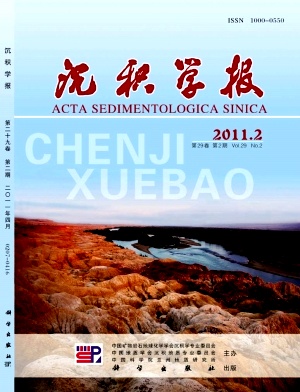Thermal History Reconstruction and Hydrocarbon Accumulation Period Discrimination of Jinhu Depression in Subei Basin
- Received Date: 1900-01-01
- Rev Recd Date: 1900-01-01
- Publish Date: 2011-04-10
-
Key words:
- Jinhu depression /
- geothermal gradient /
- ancient temperature scale /
- thermal history reconstruction /
- hydrocarbon accumulation period
Abstract: Based on the analysis of the vitrinite reflectance and apatite fission track inclusions system testing, we carried out the calculation of paleotemperature gradient and reconstruction of thermal history , and then identified the paleotemperature gradient of west slope and Bianminyang tectonic zone of Jinhu depression. According to the vitrinite reflectance, we calculated that the range of the paleotemperature being between 45.6~128.4℃ and the paleotemperature gradient was
45.5 ℃/km in the west slope, the paleotemperature in Bianminyang tectonic zone was 26.4~120.3℃ and the paleotemperature gradient was 42.7℃/km. According to the apatite fission track, we calculated that the paleotemperature gradient in the west slope was 40.7℃/km, and in Bianminyang tectonic zone was 45.8℃/km. From the comparative analysis with different tectonic zones of Jinhu depression, we concluded a law that the paleo temperature gradient was higher than presentday geothermal gradient, specifically as follows: in the west slope, paleotemperature was 10.4~15.2℃/km higher than the current, and in Bianminyang tectonic zone paleotemperature was 12.4~15.3℃/km higher than the present.By the thermal history modeling of typical wells in west slope and Bianminyang tectonic zone, it could be seen that the paleogeothermal gradient became lower with the stratigraphical time changed for the new. It shows that the geothermal gradient of K2t~E1f was higher than E2d~Ny. Before the uplift and erosion caused by the Sanduo tectonic events, the paleotemperature of depression had reached the maximum. The maturity history of depression reflected that the Ro was 0.4% in the depth of 1 000 m of Jinhu depression. The source rock was at the lowmature stage.The Ro was 0.65% in the depth of 1 900 m and the temperature reached 90℃, the hydrocarbon source rocks entered the peak phase. The homogenization temperature of fluid inclusion samples was between 62~93℃ of Well Cui 2 in the west slope. Through the comprehensive analysis of the burial historythermal history of typical singlewell and the homogenization temperature of fluid inclusions, it can be identified that the accumulation period of Jinhu depression was between 47~41.5 Ma.Then it could be judged that the Sanduo period(E2s)was the main hydrocarbon accumulation period of Jinhu depression.
| Citation: | LI Yajun. Thermal History Reconstruction and Hydrocarbon Accumulation Period Discrimination of Jinhu Depression in Subei Basin[J]. Acta Sedimentologica Sinica, 2011, 29(2): 395-401. |






 DownLoad:
DownLoad: